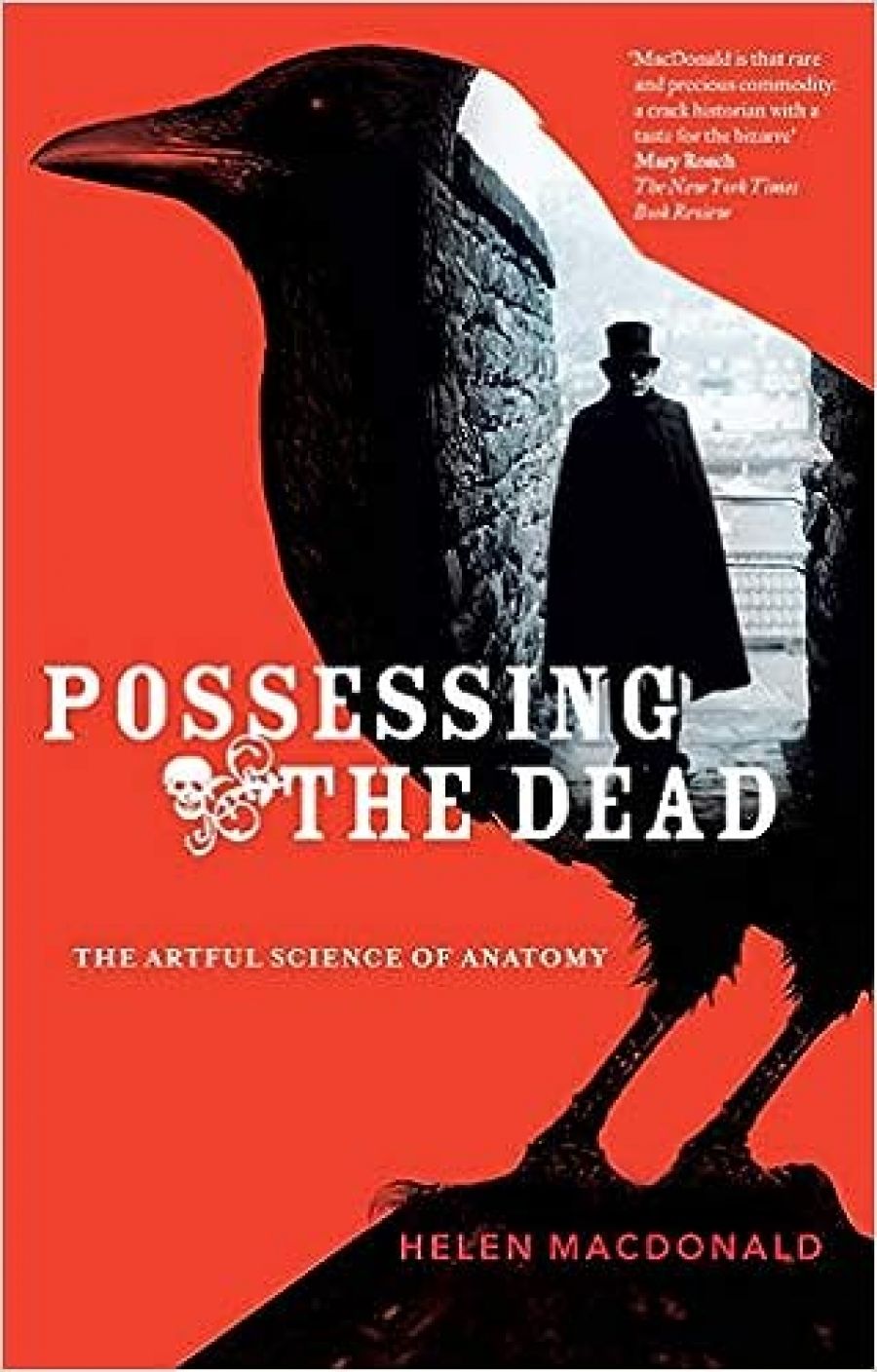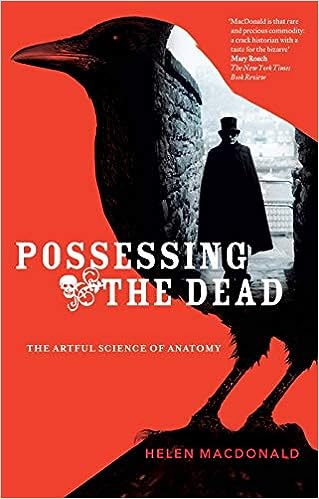
- Free Article: No
- Contents Category: History
- Review Article: Yes
- Article Title: Secrets of the cadaver trade
- Online Only: No
- Custom Highlight Text:
In 1543, Flemish anatomist Andreas Vesalius, in De Humani Corporis Fabrica (On the Fabric of the Human Body), wrote: ‘the violation of the body would be the revelation of its truth.’ Three hundred years later, English, Scottish and Australian anatomists, anatomy inspectors, museum curators and seemingly anyone involved in the business of bodies adopted the credo of violation to the extent of also violating the truth. The revelation of their contravention of laws and desecration of the dead is the subject of Helen MacDonald’s second book on the cadaver trade.
- Book 1 Title: Possessing the Dead
- Book 1 Subtitle: The Artful Science of Anatomy
- Book 1 Biblio: Melbourne University Publishing, $39.99 pb, 289 pp
- Book 1 Cover Small (400 x 600):

The purview of this book is the failures of the British and Australian medico-legal systems in the nineteenth and early twentieth centuries; how they failed and whom they failed, by profiling those figures who exploited medical practices and the law, all for the need of corpses. The flaws of the legislation and of the system lay not in the procuring of bodies – indeed, this was one of the Act’s unfortunate successes – but rather in the means by which they were obtained or ‘possessed’. Instead of using corpses from the gallows, which were too few in number for the voracious medical schools, the Act opted to farm by stealth the institutionalised poor. If a pauper were to die in an institution – workhouses, jails, asylums and hospitals, for example – their bodies could be possessed for dissection unless a relative claimed the corpse within forty-eight hours. This highlights one such chasm of the Act: institutions were not obliged to contact the families of the deceased. This gave carte blanche to the indigent body trade and denied the proper burial rights for the poor. Where dissection was once seen as a ‘secondary punishment’ for murderers, some saw this treatment of the poor as a way for them to repay a societal debt for the burdens they posed during their lifetimes.
The flaws of the Act are revealed through a series of profiles of odious men, most of whom were well connected and held positions of power, certainly within the medical professions. Despite anatomy inspectors becoming the lawful possessors of corpses, figures such as James Somerville, who at one time was the inspector for England, Wales and Scotland, were ineffectual in enforcing the regulations of the Act as new markets emerged in the corpse economy. MacDonald segues to the practices of medical schools and the cadaver trade in Australia by probing the ‘quiet disposal’ of Australian Aboriginal cricketer Charles Rose, who, on a tour of England, died from acute pneumonia but ‘did not go to the grave complete’; and devotes a chapter to the mutilation of Truganini, ‘The Last Tasmanian Aborigine’. Such ‘exotic’ bodies from the colonies were regularly exhumed and transported to be examined, and often exhibited, in museums and medical schools in Britain.
MacDonald shows a respectful restraint in detailing the maltreatment of bodies, and further resists indulging in the macabre. Instead, she places the acts of the anatomists, anatomy inspectors and their associated medical schools in the middle ground, rather than in the foreground. This contrasts with popular crime television shows and the works of anatomist Gunther von Hagens. I have managed to watch Anatomy for Beginners just once; after seeing a head-to-toe cross-section that opened the body like a book, I felt certain the suffix –tainment or –ploitation should be applied to what von Hagens was performing. MacDonald’s approach is to be conscientious and sympathetic without resorting to plaintiveness or the blustering tones of moral outrage. This is not to suggest that MacDonald is arguing against anatomical education but rather against the strictly utilitarian approach to the use of corpses, which sees a body as no more than a collection of organs, arteries, tendons, cartilage, flesh and bones to be mutilated for science.
The focus of Possessing the Dead is much tighter than that of Human Remains and will possibly appeal to a different audience; in particular, those interested in medico-legal discourse and bioethics. The legislation doesn’t receive much specific analysis, nor is there much detail on medical practices or on the changing perceptions and understandings of the body throughout the nineteenth century, some of which was handled in Human Remains. Yet rather than producing a stuffy tome with pseudo-scientific prose and the requisite scores of footnotes, MacDonald is a writer who is reclaiming history as a literary genre, all the while maintaining a high standard of research. Possessing the Dead can perhaps be described as creative non-fiction, and proves that history can be ‘riveting, entertaining, and richly informative’, as Ann Curthoys and Ann McGrath advocate in How to Write History People Want to Read (2009). Possessing the Dead might also have one unintended effect – an appreciation of red tape.


Comments powered by CComment